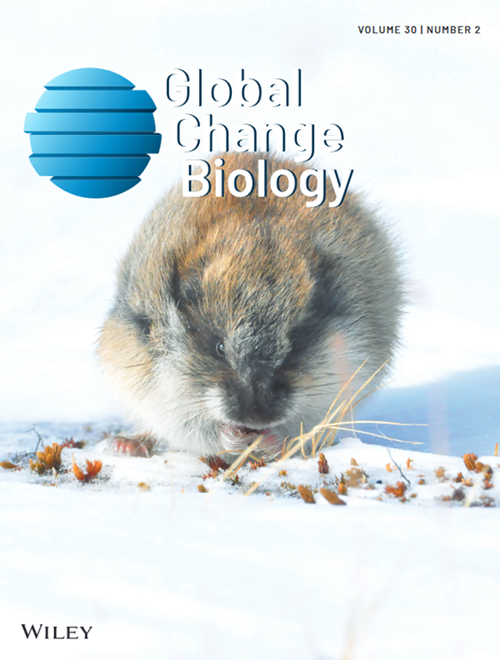Cross‐Scale Anthropogenic Threats Jointly Drive Declines in China's Estuarine Fish Assemblages Over the Past Half‐Century
IF 12
1区 环境科学与生态学
Q1 BIODIVERSITY CONSERVATION
引用次数: 0
Abstract
Identifying multi‐scale threats in the Anthropocene to vulnerable yet crucial ecosystems can inform the development of effective conservation and restoration actions. Estuarine fish assemblages, which are vital for ecosystem functioning and serve as key indicators of ecosystem health, face a multitude of anthropogenic threats operating across local, regional, and global scales. However, due to a lack of standardized, long‐term, and spatially extensive datasets, the trends in estuarine fish assemblages and their responses to multi‐scale anthropogenic threats remain unclear. We construct a dataset spanning over half a century for fish assemblages across different life stages and the multi‐scale anthropogenic threats they face in three major estuaries of China, aiming to identify patterns of abundance and richness, and to validate the relationships between widely recognized anthropogenic threats and changes in these patterns. The results indicate that, over the past half‐century, fish assemblages in all three major estuaries in China have experienced declines in abundance or remained at persistently low levels, while richness remained relatively stable. At the local scale, increased fishing intensity in estuaries and adjacent coastal areas directly reduced adult fish abundance. Regionally, water and sediment regulation measures implemented following the construction of upstream dams and reservoirs raised freshwater input and altered sediment delivery to estuaries during the fish spawning period, indirectly depressing the abundance of fish eggs and larvae. Higher sea surface temperatures (SST), driven by global warming, corresponded to greater species richness across estuaries. However, this effect was not consistently observed within individual estuaries, indicating regional variation in thermal responses. Although current protection and restoration efforts addressing threats at individual scales are gradually being implemented, we recommend a coordinated, multi‐scale management strategy to safeguard the future of fish assemblages in estuaries of China and many other estuarine systems globally against escalating local–global threats.在过去的半个世纪里,跨尺度的人为威胁共同导致了中国河口鱼类种群的减少
确定人类世对脆弱但至关重要的生态系统的多尺度威胁,可以为制定有效的保护和恢复行动提供信息。河口鱼类群落对生态系统功能至关重要,是生态系统健康的关键指标,它们面临着地方、区域和全球范围内的多种人为威胁。然而,由于缺乏标准化的、长期的、空间上广泛的数据集,河口鱼类群落的趋势及其对多尺度人为威胁的响应仍然不清楚。本文构建了一个跨越半个多世纪的数据集,记录了中国三个主要河口不同生命阶段的鱼类群落及其面临的多尺度人为威胁,旨在识别丰度和丰富度的模式,并验证广泛认可的人为威胁与这些模式变化之间的关系。结果表明,在过去的半个世纪里,中国三个主要河口的鱼类群落都经历了丰度下降或持续处于低水平,而丰富度保持相对稳定。在局部尺度上,河口和邻近沿海地区捕捞强度的增加直接减少了成鱼的丰度。从区域上看,上游水坝和水库建设后实施的水沙调节措施增加了鱼类产卵期的淡水输入,改变了向河口的泥沙输送,间接降低了鱼卵和幼虫的丰度。在全球变暖的驱动下,更高的海表温度(SST)对应着更大的物种丰富度。然而,这种效应在个别河口内并不一致,表明热响应的区域差异。尽管目前针对个体尺度威胁的保护和恢复工作正在逐步实施,但我们建议采取协调一致的多尺度管理策略,以保护中国河口和全球许多其他河口系统的鱼类群落免受不断升级的局部-全球威胁。
本文章由计算机程序翻译,如有差异,请以英文原文为准。
求助全文
约1分钟内获得全文
求助全文
来源期刊

Global Change Biology
环境科学-环境科学
CiteScore
21.50
自引率
5.20%
发文量
497
审稿时长
3.3 months
期刊介绍:
Global Change Biology is an environmental change journal committed to shaping the future and addressing the world's most pressing challenges, including sustainability, climate change, environmental protection, food and water safety, and global health.
Dedicated to fostering a profound understanding of the impacts of global change on biological systems and offering innovative solutions, the journal publishes a diverse range of content, including primary research articles, technical advances, research reviews, reports, opinions, perspectives, commentaries, and letters. Starting with the 2024 volume, Global Change Biology will transition to an online-only format, enhancing accessibility and contributing to the evolution of scholarly communication.
 求助内容:
求助内容: 应助结果提醒方式:
应助结果提醒方式:


